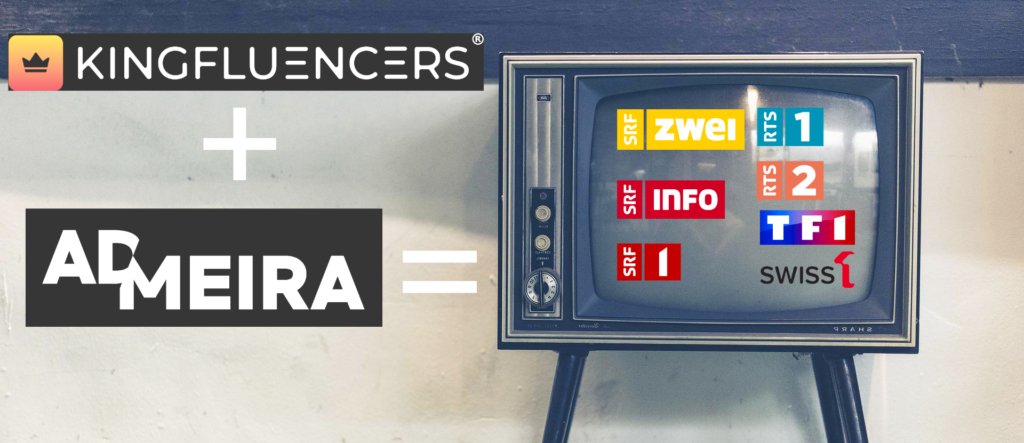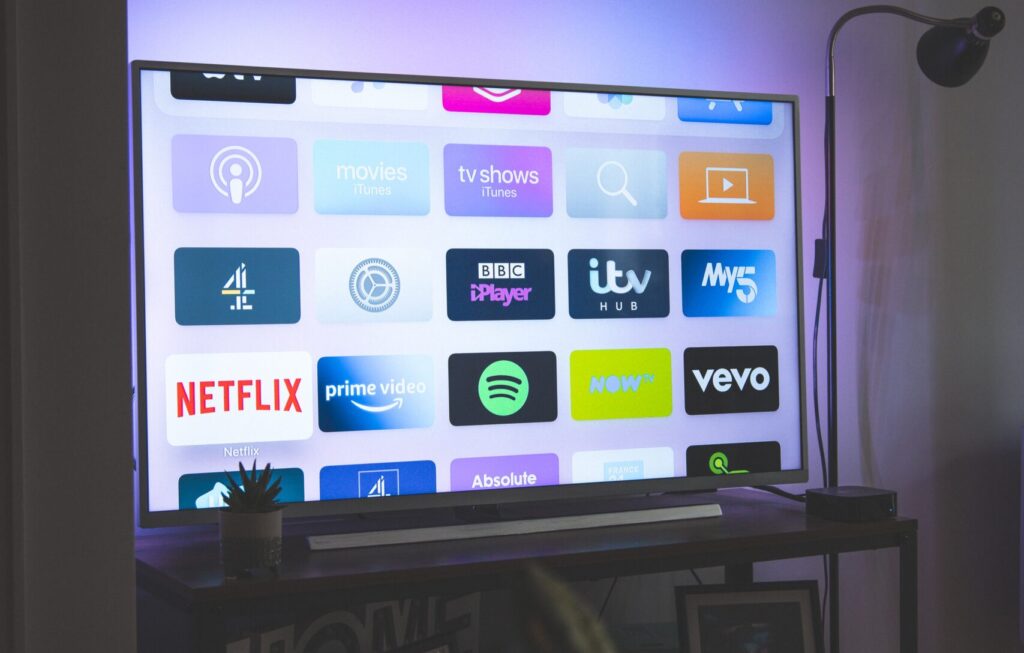In part 1, we answered the Q, “Just what is TV,” examined the growing popularity of TV, and how it remains a powerful medium for connection. In part 2, we’ll explore how TV and influencers make a powerful combo for brands, then consider innovations that could be on the horizon.
Crossovers with TV & Influencers

We may think of TV stars and influencers as two distinct types of celebrities, but there is overlap. Some influencers first stepped into the spotlight through means other than social media, then leveraged that fame to grow a social following. For example, Patric Haziri from The Bachelor, and Sara Leutenegger from Germany’s Next Top Model. The same is true for comedian Jonny Fischer, model, and former Miss Switzerland Christa Rigozzi, and singer Linda Fäh. Lina Senn is one of several influencers Kingfluencers has worked with on an ongoing basis to build successful long-term collaborations for L’Oréal. Lina also hosts the TV show, “First Dates Switzerland.”
Crossovers are also predominant amidst screens and programming. With YouTube integrated into new smart TVs, audiences consume social media on their large, wall-mounted TVs, while also watching TV programming on their mobile phones and tablets. Consumers seek quality content that resonates, and they consume it through a blend of channels and devices.
TV + Influencers = Powerful Combo for Brands
As we wrote in, “Influencer Marketing vs. Legacy Advertising,” traditional ads are a deviation from the content audiences want to consume. Conversely, influencer marketing fuses ads into the desired content. Influencers are seen as trustworthy opinion leaders and their content as authentic, unlike traditional advertising. People relate to influencers, and their recommendations are imparted with relevance and credibility. To their community members, an influencer can feel like part of their friendship circle, helping drive high levels of engagement.
Partnering with influencers is a powerful tool for brands to create engaging and authentic video content, build trust, and connect to consumers in order to fuel growth. Meanwhile, television in general remains the video channel with the widest national reach. With our new Influencer TV Spots service, Kingfluencers combines all this into one effective and efficient advertising format.
Working with Kingfluencers, influencer content can be broadcasted just like a TV commercial in the style of a social media story, such as a TikTok or Instagram Reels, lasting for up to 15 seconds. Repurpose your existing influencer marketing content for a second lifecycle on television. Promote your stories in new ways to increase campaign reach and maximize ROI. You also have the option to place fresh, new ad content on the sides of your spot to fill the TV frame. By embedding trackable CTAs like QR Codes with scan-to-shop features, discount offers, and integrated contests, you can generate direct engagement.
Through our exclusive partnership with Admeira, Kingfluencers is the only influencer marketing agency to offer this unique cross-media synergy between social media and TV in Switzerland. Reach your target audience on channels such as SRF 1, SRF 2, Swiss 1, TF1, RTS1, or more. Frank Zelger, CEO of Admeira, told Werbewoche, “With this new form of advertising, the digital campaign is optimally extended and generates additional reach thanks to the power of TV.” Then Admeira TV is in the top 4 behind YouTube, Instagram, and general TV – and still 4 places ahead of TikTok in terms of Swiss reach. In total, 5.29M people can be reached weekly via the Admeira TV channels, which is more than 60% of the Swiss population.

What’s Next? A Look Ahead
TV continues to be a powerful medium in the lives of people of all ages, worldwide. We may see linear (live) television events merge with the connective power of the metaverse. With virtual worlds, TV viewers can transcend merely “viewing” to achieve the feeling of physical presence during exciting events of global significance, such as expanding space travel.
Incorporating the metaverse can drive more intense experiences and drive a variety of deeper connections on a global scale. Reality TV programming, including contests, no longer need to be limited by physical borders. Dr. Alen Lipuš, PhD, R&D Manager @ Pro-Bit, stated, “There’s nothing better than physical touch, but the metaverse is the next best thing.” We might even just sit down on a virtual couch, ‘together’ in the metaverse to enjoy a soccer game.
In 2017, Netflix began offering “interactive” shows in a “Choose your own adventure” style. Fusing such viewer participation with the sense of togetherness the metaverse brings could generate fresh, new immersive experiences.
Having started in 1927, TV may be nearly a century old, but it’s far from a dying format. Kingfluencers’ Influencer TV Spot merges the power of TV with the trustworthiness and unmatched appeal of influencer marketing to gain unbeatable reach at an accessible cost. Contact us to learn more about this unique offer or to book your exclusive advertising package.

Author: Megan Bozman, Owner @Boz Content Marketing



